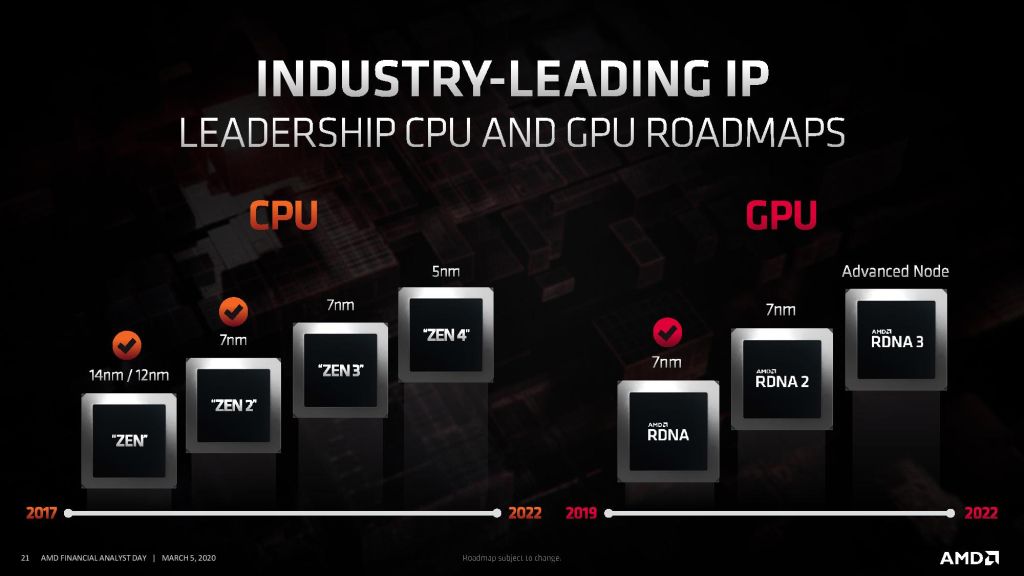AMD’s whirlwind ride back into competitiveness in the semiconductor market has led to an unexpected process node advantage over Intel, with the 7nm process from TSMC, paired with the chiplet-based Zen architecture, bringing performance, power, and cost advantages over Intel’s competing chips. But the company isn’t stopping there.
Today AMD unveiled its latest roadmaps at its Financial Analyst Day 2020, highlighting that it will continue to march ahead with new CPU microarchitectures and denser process nodes, all with the promise of offering step-function improvements at each new step along the path and a predictable and reliable release cadence, all of which have been a challenge for Intel while it remains mired on the 14nm node.
On the consumer side, AMD shared a roadmap out to 2021, which is a year shy of what it shares for the data center side of its operations. AMD tells us that’s because data center customers prize longer-term roadmaps that indicate their investment dollars will have a long-term return, which makes sense. The company also cited the ultra-competitive nature of the client CPU market currently as it chews away at Intel’s market share, perhaps implying that it either doesn’t want to expose its plans, or that it could make more dynamic changes to its desktop PC roadmap to address new challenges.
In either case, we’ll get fourth-gen Ryzen chips with the Zen 3 architecture by the end of 2020, which aligns with AMD’s current release cadence for desktop processors. The company says the first Zen 3 chips will land during the tail end of 2020, but the chips will be “fully in the market” for all segments by the end of 2021.
AMD says that EPYC Milan, the follow-on to the EPYC Rome chips, will arrive on time by the end of 2020. These chips will come with the Zen 3 architecture and 7nm process, but we can expect an enhanced variant of the process node relevant to the 7nm process shipping today. Think of these as a “+” equivalent that use TSMC’s N7+ process.
AMD’s EPYC Rome processors are already serious challengers for Intel’s Cascade Lake lineup, and the fast-follow with Milan will only intensify the competition. Intel should have its 10nm Ice Lake server chips on the market at that time, so competition will be heated.
Perhaps most impressive, AMD’s roadmaps indicate the company will have its EPYC Genoa processors fully on the market by the end of 2022. Those chips will come with the 5nm process and Zen 4 architecture, and if AMD can continue to execute on time, that represents an impressively huge jump forward in a relatively short span. We can also expect that AMD’s Zen 4 processors for the consumer market will come with the 5nm process as well.
AMD also released a new GPU roadmap, which we covered here, and provided an absolute onslaught of other information. We’ve included the full breakdown in our coverage here. AMD also announced its new 3D chip stacking technique, which it calls “X3D,” during the event.



